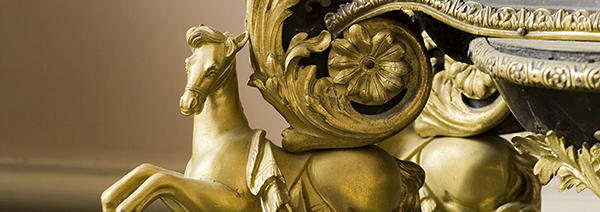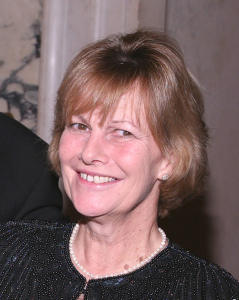You never know what secrets you might uncover when poking around a National Trust property. The furniture tells a story: What lies waiting in in the drawers of that desk in Nostell Priory? What king might have sat in that chair at Ham House? What renowned author wrote your favorite novel at that very table at Knole?
As Chairman of the National Trust’s Arts Advisory Panel and Editor of the Furniture History Society Journal, Lisa White has the distinct pleasure of asking – and answering – these questions for a living. Before she delivers her lecture for Royal Oak next week, we sat down and asked her a few of our own.
Don’t forget to buy tickets to her lectures next week! Buy Tickets
You can also give to our Furniture Research Project and support further National Trust furniture research. Donate Now
The Royal Oak Foundation: If you were an American visiting National Trust furniture for the first time, where would you begin?
Lisa White: I think I would begin with a simple, early house to get a ‘feel’ for furniture in its setting, perhaps at Lytes Cary in Somerset, then move on to larger and more complex houses and collections such as Dyrham, in Gloucestershire, before tackling the ‘battleships’ like Kedleston, Derbyshire, Petworth in Sussex or Tyntesfield in Somerset. On the other hand, if you want to start with ‘bling’ head straight for Waddesdon!
Royal Oak: What’s your favorite piece of furniture in the National Trust’s care?
Lisa: I have lots of favorites! But a current one is the so-called ‘Sea-Dog’ table at Hardwick Hall in Derbyshire. The top rests on magnificent carved seals, or ‘Sea-Dogges’ as they were called in the 16th century, and the base balances on turtles. It’s made of walnut and still has traces of gilding. When new, it must have amazed people for the quality of its carving, and the powerful symbolism attached to it. I like to think of the famous ‘Bess of Hardwick’ picking sweetmeats from gilded dishes placed on it while listening to sublime Elizabethan music in her High Great Chamber.
Royal Oak: What piece has the best story behind it?
Lisa: The most recent ‘best story’ is the discovery of so many secret drawers in the magnificent 16th century Italian ‘Sixtus Cabinet’ at Stourhead, Wiltshire. During conservation by Colin Piper, which took place in front of visitors in the Cabinet Room at Stourhead during 2007, the incredible complexity of the cabinet’s construction was revealed, with every section containing more and more hidden drawers and compartments which almost rival the luxurious decoration of the surfaces. It’s such a stunning object that the Trust has commissioned an entire book, just about this one piece of furniture – that’s as good as it gets with our collections.
Royal Oak: Tell us about a moment in your research that made you really excited.
Lisa: There are lots of exciting moments, but recently the discovery at Chastleton, Oxfordshire, of a rather dull-looking travelling chest, covered in pony-skin and lined with pages from a 17th century book, which is almost identical to one at another historic building, and with a curious history, has been really absorbing. I’ll talk about it a bit more in my lecture and won’t give the game away now!
Royal Oak: The Trust has a lot of spectacular items, like gilded mirrors or intricately detailed chairs, that exude magnificence. But it also has a lot of more ordinary objects that were used more often, and which tell a great deal about the history of a place. As a curator, how does your approach change to these very different types of pieces?
Lisa: With National Trust collections of furniture, ‘context is everything’. The fact that so many objects have survived in the houses for which they were ordered, or to which they were brought by particular owners, makes things that may appear ordinary at first sight, have real significance. Learning about the history of these pieces and understanding their significance is the essential task of the curator. The typewriter sitting on Rudyard Kipling’s table at Bateman’s in Sussex, is a standard early 20th century piece of equipment, of little significance, until you realize what was typed on it.
Royal Oak: What would you like people to take away from your lecture?
Lisa: I’d like people to leave the lecture with a real understanding of just how rich, varied and fascinating the National Trust’s collections of furniture are, and what fun it is finding out about them.
Royal Oak: Is there anything else you’d like to add?
Lisa: We are immensely grateful for everything the Royal Oak Foundation does to support the National Trust, and especially for supporting this Furniture Research and Publication Project. Watch the space!
Interested in learning more about National Trust Furniture? Plan a trip yourself using our definitive guide: Learn More







